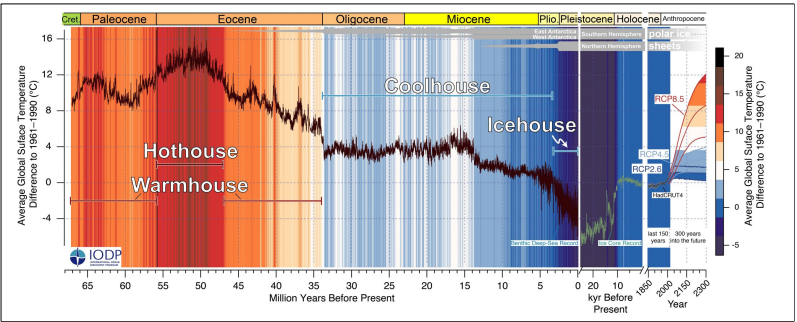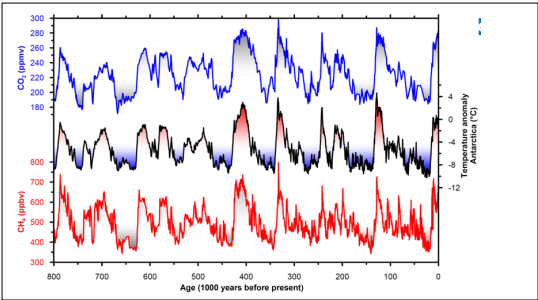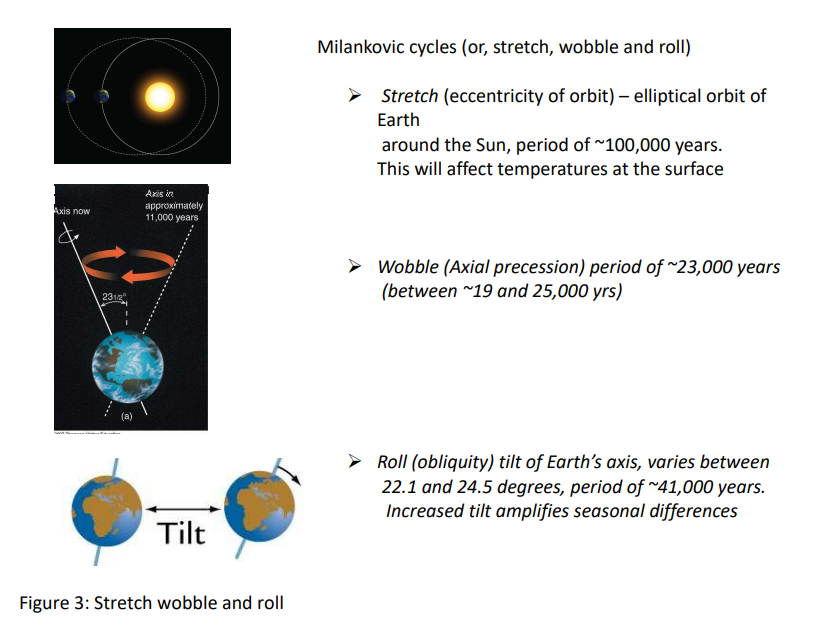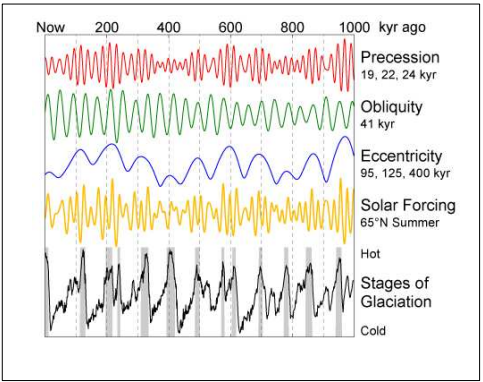Launceston Church Grammar School Grade 10 Science

Hello hello Grammar Grade 10s!
Thank you for your questions about climate change. You asked some really interesting questions about climate science, outcomes of climate change, future of energy and cars.
You'll find answers to your questions from our climate experts below - have a read and watch their answers.
You can also have a look at what other classes across Tasmania asked this year, as well as our climate change toolkit.
Our Questions
This is a really important question – with an “it depends” kind of answer. What we know for sure is that climate change is already, and will continue to, have really big impacts. The sorts of impacts that climate scientists expect that future generations will face include more extreme weather events, sea level rise, biodiversity loss, environmental degradation – all of which have complex and interrelated flow on effects. It is also important to remember climate change is not just a problem that is going to have impacts in the future. It is already having significant impacts to people’s lives right now!
What’s tricky about this question is that the kinds of impacts and extent of those impacts that future generations will experience however, depends on different mitigation scenarios. What that means is that if action is taken now to reduce greenhouse gas emissions and reach net zero CO2 emissions, then the scenarios for future generations will be less severe and dangerous then if action takes longer or doesn’t happen at all. What is also tricky about this question is that projections of what the future may look like depending on current actions could be much more severe and extreme if we reach ‘tipping points’ (some of the other experts have answered questions about these).
One of the really helpful things about these climate models and scenarios is that they show us really clearly what we need to do now to ensure a safer world for future generations. We can be a part of creating a more just and safe world for future generations by taking action now.
You could also read these articles about climate projections for 2500, and what the earth will be like 500 years from now.
Climate change and its causes will affect your generation in many different ways, in Australia and elsewhere. These include rising average temperatures, more frequent and severe storms, floods and bushfires, and extinction of plants and animals. The loss of topsoil from drought, flood and wind and unpredictable weather will affect farming and could cause more frequent and severe famines. This could lead to increasing political tensions in some countries around access to resources. People and governments will need to spend more money on safety and preparedness. These impacts are all related to one another.

A lot of produce will become more expensive as environments change. This includes coffee and honey, and even some vegetables, fruits and meat. Campfires, burn-offs and open-flame barbeques would be restricted for longer parts of the year as fire bans become increasingly common. Take the example of the 2020 bushfires. More than 3 billion animals were impacted, forests were damaged or destroyed, and human tragedies included loss of life, health, homes and livelihoods. Crises like this would be repeated in increasingly worse fire seasons, meaning bigger and bigger expenses for fire preparedness. Taking action on climate change will not stop these impacts entirely, but it can reduce them.
Climate change and its causes impact more than the natural environment. They have knock-on impacts in health. Air, water and soil pollution will continue to cause health conditions and worsen existing ones like cardiovascular and respiratory diseases as well as cancers. While these outcomes are less common in Australia, they happen here too. People in poorer communities with fewer support structures are impacted most. Your generation will see these impacts in your lifetimes. In fact, you already have. Increased exposure to new infectious diseases in the environment has also been linked with climate change, meaning epidemics and pandemics may be a thing of the future and not just the present.
While these impacts cannot be stopped completely, there is so much that can be done to avoid the worst of it. If we rapidly reduce the greenhouse gas we emit, we can improve the future for your generation and the generations who follow you. Action on climate change now will play an important part in your future quality of life, and in the lives of many others around the world in your lifetime.
Could the Earth ever enter another ice age? The short answer is quite probably, but maybe not for a very long time. However, nothing is certain, especially with the current human-induced changes now occurring. To explain why the answer is probably, we can look at what we know about past climate.
The Earth’s climate has varied over millions of years (see Figure 1). You can see that it was very warm around 56 millions years ago, and very cold around 25,000 years ago. The temperature has generally increased since about 20,000 years ago. But you can also see that there are a lot of ‘little’ ups and downs’. If you look at Figure 2, this shows variations over the last 800,000 years. The line in the middle is temperature. You can see that there are semi-regular periods of colder temperatures (glacial periods, or what some people call ice ages) that last for tens of thousands of years. The warmer (inter-glacials) and colder periods (glacials) can be related to a number of factors that affect Earth’s climate from ‘outside’ the Earth. We call these external forcings.

Source of Figure: Westerhold et al. 2020 Science

One of the important external forcings of glacial and interglacial periods is related to how earth travels around the sun. About 100 years ago, a smart guy from Serbia called Milutin Milankovic realised that there were three important ways the Earth’s orbit around the sun changed over long time periods. We can call these, stretch, wobble and roll (see Figure 3). These have periods (or cycles) of thousands of years. If you look at Figure 2 again, you can see that warm temperature periods occur around once every 100,000 years (give or take). This is very similar to the period of how Earth’s journey around the sun changes over time (stretch). So, around every 100,000 years, our orbit becomes more ‘circular’ or ‘less elliptical’, so we are closer to the sun. When our orbit becomes more elliptical, we are further away from the sun for much of the time, and our climate is cooler. The other two cycles are also important, but less relevant to your question. They will have important impacts on seasonal differences in the hemispheres and day lengths from the equator to the poles. In Figure 4, there’s a plot of the cycles over time, and down the bottom is a plot of stages of glacial and interglacial periods.


There are also other factors that affect the Earth’s climate that come from ‘outside’ the Earth (we can call these external forcings). You have probably heard of sunspots. There have been periods when there are less sunspots (the sun is cooler). When the sun is cooler, the Earth is cooler, too. These also have an impact on Earth’s climate, but on much shorter time scales (generally decades).
So, the longer answer to your question is that there are some factors that affect Earth’s climate that come from outside. These have big impacts on our climate and can ‘set up’ positive feedback loops meaning that when one thing happens it leads to another process which then causes some thing else. Like dominoes falling over. Or maybe like when you get up in the morning feeling a bit grumpy and say something not so nice to your brother or sister. They’re then nasty back to you and you get grumpier. When you go to school you’re still grumpy and take it out on your friends who then get grumpy with you. This would be positive feedback because one bad thing leads to another bad thing (or if you got up happy and said nice things…etc. That would also be positive feedback).
It is hard to know what will happen in the future with man-made climate change which is warming our planet very quickly. If we continue release CO2 as we are at present, we are unlikely to experience another ice age any time soon. Our orbit of the sun is currently quite ‘circular’ (or least elliptic) but is slowly becoming more eccentric. So, it is reasonably likely that some time in a little less than 100,000 years the Earth may enter another glacial period.
What it will look like then is another matter altogether.
Climate change mitigations have started, we have been working towards them for over 20 years. The reports from the worlds scientific body say that there are severe outcomes if we don’t change current practices. Climate change will get worse before it gets better. However, the people most qualified to help guide scientist, and in turn the world, are the indigenous peoples, who have survived multiple ice ages in isolation, who’s song lines and ancient histories and deeply connected cultures treat the earth as a sacred sentient being that is to be treated respectfully and with honour.
The turning point for climate change is when ‘white’ colonial society see’s the earth not as a resource, instead these so-called civilisations need to have a treaty with the people who are the guardians of the planet. When we cease to treat the earth as a resource, when we recognise humans as people and not consumers, when we see that corporations are not sentient entities - then we will begin to win the climate mitigation battle at a pace conducive to healing mother earth by slowing the effects of western human anthropocentric induced climate change.
The fact that entire pacific nations will disappear, that the artic ice cap will disappear which is a staggering issue as new sea shipping lanes are created, new international boundaries are created and the changes in endemic migrations, nurseries, and spawning grounds. One of the most high-profile examples of climate migration is the creation of the grizzly-polar bear hybrid, as the ice shrink and drives polar bears south and the warming waters means grizzlies head further north as salmon now spawn in rivers that were previously inaccessible, the result is the two bear species meeting and procreating. Things are changing, is it fast enough for mitigation to occur, I’m not sure, but at least now there are changes and humanity are agreed that a real pathway needs to be locked in.
This is a great question and a really important one, because if we can understand what the main threats of climate change are, we can do something about them! The first thing to understand is that we are talking about anthropogenic climate change. This refers to climatic changes caused by human activities (anthropocentric meaning human). Climate change is ultimately caused by releasing greenhouse gases into the atmosphere which contributes to global warming. You can find some great information about greenhouse gases, global warming and their relationship with climate change from Dr Beth Fulton and Deniz Yildiz.
Threats are, therefore, activities that contribute greenhouse gases to the atmosphere. The biggest threat and production of greenhouse gas emissions is our use of fossil fuels. Fossil fuels are hydrocarbon-containing materials, such as coal, petrol and natural gas, formed underground from the remains of dead plants and animals a long, long time ago that humans extract to use for things like generating electricity, driving cars and machinery.
Another major threat is deforestation which is the cutting down and often burning of forests, such as the Amazon rainforest, and also forests here in Tasmania.

Intensive agriculture contributes significantly to the release of greenhouse gases to the atmosphere as well. Cows and sheep produce large amounts of methane (a greenhouse gas) when they digest their food, and this gas adds to the greenhouse effect on the Earth. Furthermore, animals need fields to graze on, and this leads to deforestation.
The use of nitrogen fertilisers to support intensive agriculture is another contributor to climate change because they produce nitrous oxide emissions.
Last, but by no means least, fluorinated gases contribute to greenhouse gas emissions. These particularly damaging gases are emitted from equipment and products such as commercial and industrial refrigerators, air-conditioning systems and heat pumps. Such emissions have a very strong warming effect, up to 23,000 times greater than that of carbon dioxide.
What is important to remember though is that there is great work being done to combat ALL of these threats.













